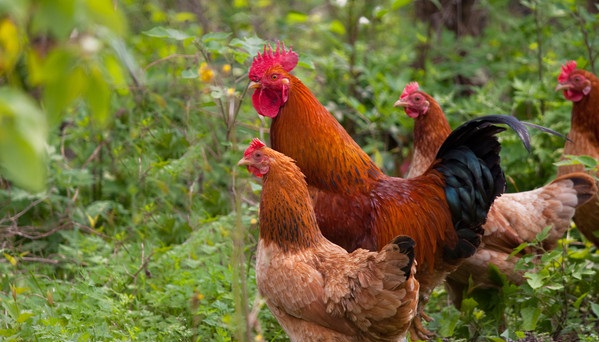Chinese researchers have tracked the transfer of antibiotic resistance genes from one bacterial species to another, and between farm animals and the human gut. Their findings are published in Applied and Environmental Microbiology.

Farm Animal of Chicken (Image from Baidu.com)
Certain antibiotic resistance genes are easily transferred from one bacterial species to another, and can move between farm animals and the human gut. Revealing the transfer network of this 'mobile resistome' in bacteria will help to provide further insight into the evolution and spread of antibiotic resistance in the clinic.
In this study, led by corresponding author Professor Zhu Baoli at the Institute of Microbiology, Chinese Academy of Sciences, the researchers analyzed 23,425 bacterial genomes and millions of human and animal gut bacterial genes. Their findings showed that the transfer of mobile antibiotic resistance genes between farm animals and the human gut is mainly controlled by bacterial phylogeny, but under ecological constraints. Interestingly, these mobile antibiotic resistance genes are also harbored by diverse human pathogens. Among the 84 mobile antibiotic resistance genes shared between at least two gut databases, 41 had recently moved between human and animal guts. Collectively, the 41 antibiotic resistance genes are capable of disabling all of six major classes of antibiotics, including tetracyclines, aminoglycosides, and beta-lactams. The bacterial species that display the most sharing of resistance genes are Escherichia coli, Bacteroides fragilis, and Staphylococcus aureus—all of which can be pathogenic.
"The so-called 'transfer network' of antibiotic resistance genes described in the paper is very forward-reaching, and will have great impact not only on our understanding of this modern microbial dilemma but also on how human healthcare agencies and research institutes attempt to cope with it," said Dr. Harold Drake, editor of Applied and Environmental Microbiology. (Asian Scientist)

